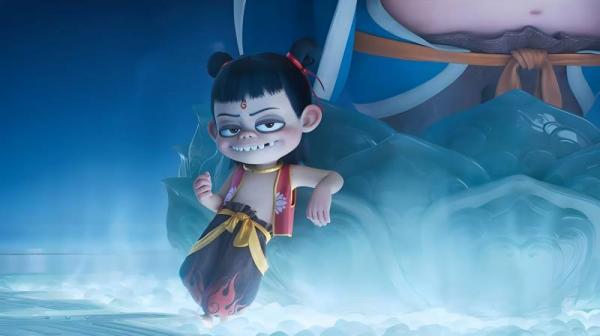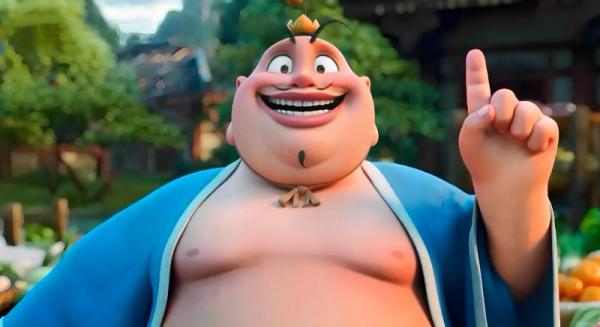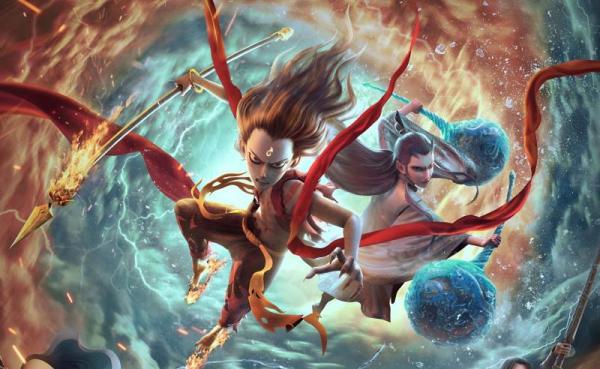Chinese Philosophies and Culture Behind Nezha Movies
As the sequel to the 2019 blockbuster anime Ne Zha: Birth of the Demon Child, Nezha 2 keeps the heart-pounding action sequences and stunning visual spectacles like its predecessor. Unlike classical Hollywood films, Nezha movies are deep-rooted in Chinese philosophies and culture by combining Buddhism, Taoism, Confucianism, Mohism, Legalism, and even Sun Tzu’s Art of War, which all contribute to their long-lasting influences.
If you are planning China culture tours, never miss Nezha's stories, as they will bring unforgettable memories to your travel to China. Far from being just an action-packed fantasy, Nezha movies serve as a cinematic vessel carrying thousands of years of Chinese culture, making them a gateway into the core of Chinese philosophy, spirituality, and timeless storytelling.

1.Buddhism Philosophy in Nezha Movies
Buddhism Origin of Nezha’s Name
Most people first learn about the Nezha deity from the novel depicting Chinese myth gods in the Ming Dynasty named Fengshen Yanyi (Investiture Of The Gods). In fact, Nezha is not a Chinese name but an abbreviated Sanskrit transliteration, and the real owner of the name is Nalakuvara, an Indian mythological figure. With the widespread of Buddhism in China, the name Nalakuvara was introduced in Chinese Buddhist texts and was later rewritten and shortened as Nezha (also spelled Ne Zha).Buddhism: Karmic Cycle and Ego-clinging
Buddhism emphasizes the concept of the karmic cycle, and Nezha’s fate of bearing the "Curse of Heavenly Calamity" is a tangible manifestation of karmic power. Besides, Buddhism believes that go-clinging is the source of pain, while the characters in Nezha movies were struggling with ego-clinging. For instance, Nezha was initially irritated as he was labeled as a demon and fell into an ego-clinging identity; Ao Bing’s obsession with the dragon clan also burdens him with a heavy mission.
>> Recommended China Religion Tours about Buddhism:
2.Taoism Principles in Nezha Movies
Yin-Yang and Five Elements
In Nezha movies, the setting of Nezha (the Demon Pill) and Ao Bing (the Spirit Pearl) and their attributes embody the Taoist concepts of Yin-Yang. The reconstruction of their bodies with the Seven-colored Lotus exemplifies the principle of the Five Elements' mutual generation and restraint, specifically "water restricts fire" and "metal generates water", which finally leads to Nezha’s rebirth.
Besides, Ao Bing’s calmness and wisdom also form a stark contrast with Nezha’s fiery temper and impulsiveness, and the two complement each other like Yin and Yang.Chinese Architecture with Taoist Eight Trigrams
In the movie Nezha 2, the Jade Void Palace presents the characteristics of Chinese architecture and implies Taoist philosophy. Its design is inspired by the Taoist concept of "unity of heaven and man", and the construction follows the structure of the Eight Trigrams, which is one of the core symbols of Taoist culture. The Jade Void Palace with Eight Trigrams structure forms a huge energy field that symbolizes the harmonious unity of heaven, earth, and humanity.
>> Recommended China Tour of Taoism:China Taoism Pilgrimage Adventure

The Dialectic of Good and Evil
There is no doubt that the subversion of the concept of good and evil in Nezha movies is the most thought-provoking part. When Nezha shouts, "My fate is in my own hands, not in heaven's", it echoes the ancient maxim from the Xishengjing (Scripture of Western Ascension): "My life is in my own hands; it does not belong to heaven or earth." While the combination of Ao Bing and Nezha in Nezha 2 represents the philosophical dialectic of "there is no absolute definition of good and evil."
In Nezha’s story, the border of good and evil is blurred due to this subversive deconstruction. For instance, the chains for the Dragon Clan serve as both a symbol of confinement and power. Hence, good and evil are merely labels given by the outside world. What lies beneath is the far more complex issue of true free will. And those who appear glorious on the surface may harbor darkness within, while those deemed villains are actually adhering to the right path.
3.Confucianism Beliefs in Nezha Movies
Filial Piety
When it comes to filial piety, obedience may occur in your mind. However, in fact, blind obedience is not the core of filial piety in Confucianism. In the movie Nezha 2, the relationship between Nezha and his parents has become increasingly close, with respect and love becoming the core of practicing filial piety.
Confucianism emphasizes that family members should care for, respect, and take responsibility for each other, which can also be traced through Nezha’s respect and understanding towards his father, Li Jing.
Self-Improvement
The Confucian way of cultivating one's moral character and temperament mainly aims to form an independent personality, which can also be seen in Nezha movies. When facing his unfair fate, Nezha did not yield but strove to change it instead. His spirit of self-improvement is what Confucianism advocates exactly. It encourages people to constantly strive in adversity and work hard to be a better person.>> Recommended China Tour of Confucianism: 2-day Qufu and Mt. Tai Tour
4.Mohist Resistance in Nezha Movies
Mohist non-fatalism and the spirit of defying oppression are also fully reflected in the Nezha movies, especially in Nezha 2. For instance, the groundhogs dressed in patched clothes, Shiji Niangniang, or Lady Rock, and even the ordinary people in Chentang Pass were all deemed unworthy and could be sacrificed to maintain the rule of the immortal world.All these tiny characters worked together to fight against the oppressors and tried to change their fate, which resonates with the Mohist philosophy of defying oppression and pursuing freedom.

5.Legalist Reform in Nezha Movies
In the movie Nezha 2, Wuliang Xianweng, the Immortal Master of the Chan Sect, rules the immortal world with the bureaucratic system of the Jade Void Palace. He tried to maintain his power by driving a wedge between the Dragon Clan and suppressing his opponents. This embodies the concept of centralized power advocated by Legalism.Nezha doubted the immortal examination and dared to challenge the rules and system of the immortal world, which also presents the Legalism spirits of not fearing authority and daring to break unreasonable laws.
6.Lessons in The Art of War in Nezha Movies
For the last battle in the movie Nezha 2, when shrimp soldiers, crab generals, octopus warriors, and myriad spirits stand side by side with humans, every tiny character is trying to rewrite their predetermined fate. When the East Sea Dragon Clan uses their bodies as shields to protect the people, it reflects the strategic wisdom of The Art of War. Moreover, it exemplifies the unyielding will, as is said in The Art of War: “An army burning with righteous indignation is bound to win.”
Nezha is not only a deity in Chinese myths but also a carrier of the essence of Chinese culture. Except for Nezha 2, there are many anime and movies telling stories about him, including New Gods: Nezha Reborn, I Am Nezha, and more.
If you are interested in Nezha’s tales, don’t hesitate to plan a trip to China and get closer to this mysterious hero in person. You can visit Nezha Temple in Macau and Nezha Palace in Yibin of Sichuan, which will definitely leave a deep impression during your China tour.

